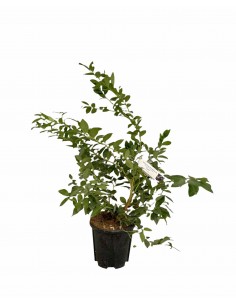Blueberry: Properties and Benefits
First of all, this fruit has antioxidant, anti-inflammatory and vasodilatory properties, which help in the treatment of cardiovascular system disorders. The great nutritional value of blueberries also derive from the rich presence of vitamin A and C (those in greater quantities), but also of vitamins B1, B2, PP and mineral salts essential for our body (calcium, phosphorus, iron, sodium and potassium), which give the berries an antioxidant action. There are three different species of blueberry: black, red and blue. Let's find out better.
Bilberry: it is the richest in healthy principles. In fact it contains sugars and many acids, in particular citric acid (which protects the cells) but also oxalic acid, hydrocinnamic and gamma-linolenic acid. Oxalic acid is what gives the classic sour taste of the fruit.
Cranberry: the difference with the black blueberry is not only due to the color and flavor, but also to the texture of the leaves, which appear leathery, shiny and persistent. Cranberry (rich in iron, vitamin C and fiber) is widespread in many regions of Europe and in the hilly and mountainous areas of Italy. The action of these vitamins is appreciable especially with regard to the problems related to the capillaries (in fact it strengthens the walls). Its fruits are very tasty and are generally used for the preparation of excellent jams. This is considered by experts to be a healthy and healing food. In medicine, cranberries are used to prevent and treat urinary tract infections (especially cystitis caused by Escherichia coli, reducing its amount in urine); its effectiveness is also appreciable with regard to mycoses and viruses.
Blueberry: its regenerating action makes it a very special fruit that can really health. In nature it grows in most of Europe and differs from the black-colored variety in terms of taste and appearance. The properties, however, are equally miraculous: the blueberry benefits the blood vessels, making them more elastic and more toned, and is one of the most effective natural remedies for cellulite, varicose veins and water retention.
DESCRIPTION OF THE PLANT:
It is a small shrub about 50 / 60cm tall with oval or lanceolate leaves with a serrated edge and bright green or gold-yellow during the autumn season. During the final part of the spring season, the blueberry plant has the particular characteristic of producing bunches of flowers with a typically bell-shaped shape and extremely small dimensions, which are characterized by having a white color and developing at the leaf axil. During the initial phase of the summer or autumn season, the typically round fruits come to maturity. The fruits of the blueberry are characterized, in the first place, to have a traditional purple color and, in most cases, they are covered with powder, which guarantees a good opacity.


